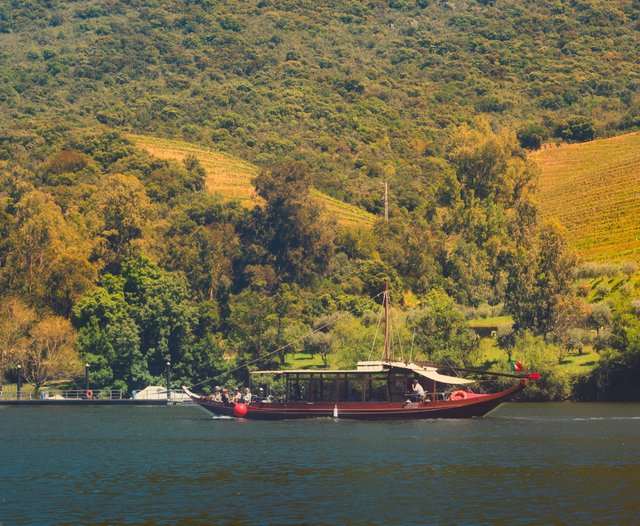📷Curiosities about the Azores Archipelago
Italy Community
✅ 1901 | King Carlos, the Royal Visit, and the Reinforcement of National Unity
In the summer of 1901, the King and Queen of Portugal, Dom Carlos of Bragança and Dona Amélia of Orléans, visited the Madeira and Azores archipelagos. It was the first and only royal visit to these island regions. While some royal family members had previously been to the Azores—including King Carlos's great-grandfather Dom Pedro of Bragança in 1832 and his father Prince Dom Luís in 1858—those earlier trips did not have the status of official state visits.
The visit aimed to promote the monarchy and was largely driven by the efforts of Ernesto Hintze Ribeiro, a native of Ponta Delgada who was then the President of the Council of Ministers.
The archival material documenting the royal visit to the Azores is extensive and shows that the royals were received with great enthusiasm, pomp, and affection. The trip proved to be a success for a monarchy already in decline and helped to publicize the Atlantic islands while reinforcing national unity.
The event received widespread media coverage, with both Portuguese and foreign journalists accompanying the visit. Various naval units were mobilized, making the maritime and ceremonial aspects particularly noteworthy.
A Naval Division was assembled to accommodate and transport the Portuguese royals and their large entourage. It included the most modern ships in the Portuguese Navy: the cruisers D. Carlos, S. Gabriel, and Rainha D. Amélia. Their crews were reinforced to allow for ceremonial disembarkations on each island.
The support ship Africa and the royal yacht Amélia were dispatched ahead to the Azores, carrying furniture, carriages, and other necessities to ensure comfort for the royals. These ships also transported royal officials, aides, telegraph operators, guests, and security personnel.
The royal accommodations aboard the cruiser D. Carlos were described in detail by the press. After visiting Madeira from June 22 to 24, the royal party proceeded to the Azores, starting with Santa Maria on June 27. As planned, they did not disembark but were greeted on board by the mayor of Vila do Porto. The king responded with the following statement:
"On behalf of myself, Her Majesty the Queen, and the entire Royal Family, I sincerely thank the Municipal Council of Vila do Porto for the respectful and festive homage. I have no greater aspiration than to receive the affection of all Portuguese people, and I am deeply moved by these heartfelt greetings to their monarchs."
The visit to Santa Maria was brief, and on the same day, the fleet sailed to Faial, visiting Faial and Pico from June 28 to 30, Graciosa on July 1, Terceira from July 2 to 4, and finally São Miguel from July 4 to 11.
The fleet arrived in Horta Bay on the morning of June 28 and was saluted by the British cruisers Australia and Severn and the Spanish cruiser Vitoria, sent by their respective governments.
The Portuguese fleet was escorted by the gunboat Sado and a flotilla of over 80 whaleboats:
"It was a truly apotheotic reception... The thunderous sounds of artillery, grenades, bells, bands, and fireworks created a majestic orchestration as the royal naval cortege approached the dock at Santa Cruz."
Such maritime pageantry had never been seen before in Azorean waters. The royal party attended a Te Deum at the main church and paraded through streets adorned with triumphal arches, festive crowds, and six marching bands. Later, a garden party and a gala ball were held at the Amor da Pátria Society.
The following days included visits to Faial institutions and traditional ceremonies, such as a Holy Spirit coronation with customary pastries and music.
On June 30, the third day of the visit, the royals set sail for Terceira, briefly stopping at Graciosa for six hours before continuing to Praia da Vitória, escorted by British ships.
"As the squadron approached Praia, the people of Vila Nova gathered, waving flags and cheering the royal visitors."
The fleet first anchored in the historic bay of Praia da Vitória for official greetings and then moved to Angra Bay, accompanied by Africa, Bérrio, Amélia, and Sado, arriving at 5 PM.
"Representing England were the British battleships Australia and Severn – two of the finest in their navy."
"A large flotilla of tugboats, launches, and boats filled with people and four music bands met the division at sea. The royal cruiser passed through this line to a grand ovation of cheers, hymns, and fireworks."
The royal couple disembarked the next day via Customs launch No. 1, amid great festivities:
"Angra do Heroísmo is in celebration. The arrival of Their Majesties was met with genuine enthusiasm from the Terceiran people, ever loyal and devoted to the current dynasty."
They visited the Cathedral, then proceeded to the Palace with Prime Minister Hintze Ribeiro. King Carlos recalled that Angra had been the capital of the Regency during his grandparents' time and expressed gratitude for the warm reception.
Highlights included a large agricultural fair and a popular tourada à corda held in the couple's honor.
"A flotilla escorted the royals to Ponta Delgada, and the city hosted grand celebrations, particularly in Furnas, where the Marquês da Praia e Monforte recreated scenes from One Thousand and One Nights."
"From the lush valley and the view of Sete Cidades, the royal visitors took excellent memories."
Queen Amélia was gifted with traditional pastries later known as Donas Amélias, adapted from "Bolo das Índias" and made with spices.
"At 7 PM, the royal couple left the palace to thunderous applause. The streets were packed with people cheering the monarchs. Queen Amélia, in particular, inspired deep affection, gaining near-cult status among the local population."
A farewell dinner was hosted aboard the D. Carlos cruiser, and at 2 AM on July 4, the fleet departed for Ponta Delgada, arriving the next day to massive crowds.
After several days in Ponta Delgada and a visit to Furnas on July 9, the fleet set sail for Lisbon on July 11.
"At a 150-seat banquet held at the Civil Government in Ponta Delgada, King Carlos declared that never in his reign had his heart been more deeply touched."
On July 14, 1901, the fleet reached Lisbon, and the royal family disembarked at the Navy Arsenal, proceeding on foot to the Municipal Palace.
Hintze Ribeiro noted that the royals brought back from the archipelagos "the most pleasant memories of the affectionate and enthusiastic displays of heartfelt respect and unparalleled devotion they received everywhere." Still, many criticized the excessive cost of the royal trip during a time of national hardship.
"Upon arrival in Lisbon, the King sent a telegram to the president of the Ponta Delgada council: 'As we arrive, I want to assure you that neither the Queen nor I will ever forget the affectionate welcome we received there, which will forever remain in our hearts.'"
| Category | #italy |
| Photo taken at | Douro Valley - Portugal |
)


Upvoted! Thank you for supporting witness @jswit.